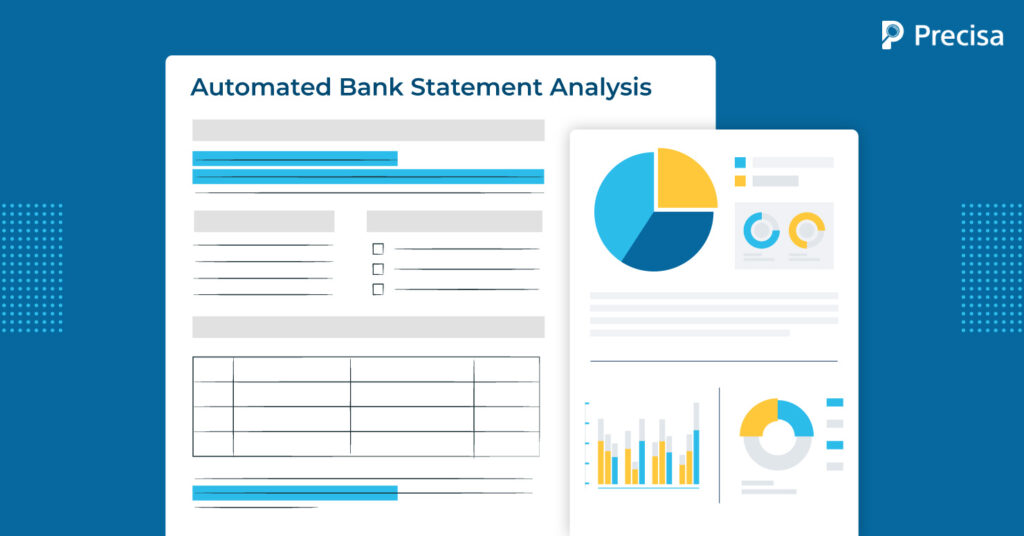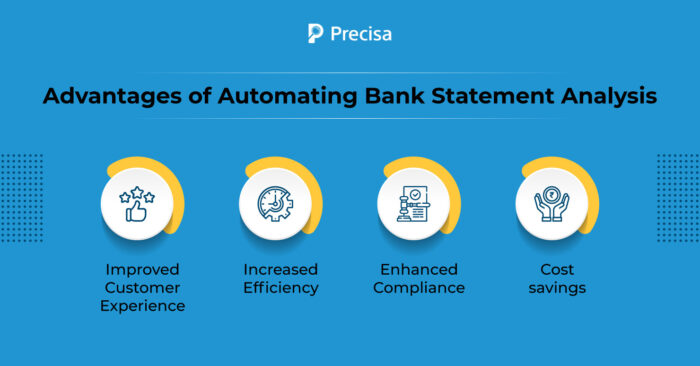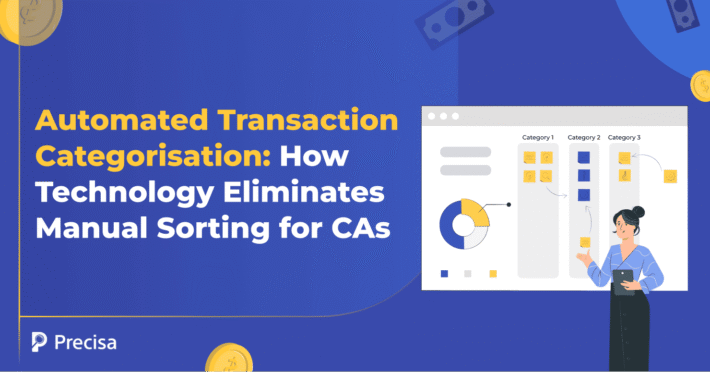Improving Loan Processing Times and Accuracy with Automated Bank Statement Analysis

As the lending market grew from $7887.89 billion in 2022 to $8682.26 billion in 2023, speed and accuracy have become critical factors determining the success of lending operations like loan processing. Financial institutions must continually evaluate and analyse various financial documents, including bank statements, to determine a borrower’s creditworthiness. However, manual analysis of bank statements can be tedious and time-consuming, leading to delays in processing loan applications. This is where automated bank statement analysis comes into play. This technology uses machine learning algorithms to analyse bank statements and other financial data borrowers provide, helping lenders verify financial information quickly and accurately.
In this article, we’ll explore the benefits of automated bank statement analysis and how it can improve loan processing times and accuracy.
Automated Bank Statement Analysis: An Overview
Automated bank statement analysis is a technological approach that employs software algorithms to extract data from bank statements and categorise transactions automatically.
Financial organisations and lenders leverage this technology to analyse their client’s financial situations and make informed judgements.
The software method entails scanning bank statements and extracting data such as transaction date, amount, payee, and category. The analyser software then categorises the transactions based on established rules, such as whether the transaction is related to food, rent, or utilities.
Automated Bank Statement Analysis: Some Additional aspects
The software can also analyse the transaction history to find patterns and trends in the client’s financial behaviour. This can aid lenders in determining the client’s creditworthiness and risk level.
It can also be used with a lender’s existing loan processing software or as a stand-alone solution. The system can read and process bank statements in various formats, including PDF, CSV, and Excel.
Automating bank statement analysis can save lenders time, decrease errors, and increase loan processing accuracy, allowing them to make better judgements and provide better client services. Let’s take a closer look at how.
Automated Bank Statement Analysis: 4 Major Advantages
Automated bank statement analysis offers several benefits for banks, financial institutions, and borrowers. These benefits include:
-
Improved Customer Experience
This software can improve the client experience by expediting loan approval. Customers who obtain a decision fast are more likely to be happy with the loan application procedure.
This can assist banks and other financial organisations in attracting and retaining consumers.
-
Increased Efficiency
It can improve the efficiency of loan processing operations. The software processes loan applications faster and more correctly than traditional techniques, allowing bank personnel to focus on other responsibilities.
This leads to more efficient loan processing operations and helps banks and financial institutions operate more effectively.
-
Enhanced Compliance
This software can assist banks and financial organisations in meeting regulatory obligations. The software can give information about an applicant’s financial history, which can be used to assess creditworthiness and decide whether they meet regulatory standards for loan applications. This is helpful for banks and financial organisations to avoid regulatory fines and penalties.
-
Cost savings
Automated bank statement analysis can lower loan processing expenses. Because the software can process loan applications faster and more precisely than human techniques, bank workers are no longer required to assess and process loan applications manually.
As a result, banks and financial organisations may benefit from lower operational costs.
How Can Automated Bank Statement Analysis Speed up Loan Processing?
Automated bank statement analysis can help streamline loan processing and reduce processing time dramatically. Here are some examples of how it might shorten loan processing times:
Quick and Accurate Data Extraction
Automated bank statement analysis quickly and accurately extracts data and categorises transactions. The system uses machine learning algorithms to identify important information such as income, expenses, and transfers, eliminating the need for manual scrutiny by loan officers and reducing application time.
Improved Decision-Making
It gives lenders an accurate view of borrowers’ financial situation, allowing them to make smart lending decisions. It finds and corrects errors or irregularities in financial data. Furthermore, it detects red flags, such as irregular transactions or large debts, preventing potential fraud or losses.
Faster Loan Approval
In today’s fast-paced lending industry, processing loan applications swiftly is vital for lenders to remain competitive. Thanks to this software, loan officers can handle applications in a quarter of the time it takes with manual methods. Borrowers will have faster access to funds as a result of this.
Automated Bank Statement Analysis: Improving Accuracy
This software is a very accurate technology that significantly increases loan processing accuracy. Here are some methods for improving accuracy with this:
1. Less human error
Manual bank statement processing is prone to errors, particularly in data entry and calculations, which can severely affect borrowers and lenders. Automated analysis reduces human error by automating data extraction and analysis, ensuring accuracy and dramatically lowering the chance of errors.
2. Consistent Standards
Automated bank statement analysis technologies use standardised criteria to categorise transactions and extract data from bank statements, assuring accuracy and reliability. Loan officers can have confidence in the data, simplifying their decision-making process.
3. Quick Data Validation
This software can swiftly validate borrowers’ financial data. This technology may cross-reference information from bank statements with information from other sources such as credit reports, tax returns, and other financial records. This helps to guarantee that borrowers’ data is correct and consistent.
4. Reduce Fraud Risks
This software can also assist lenders in reducing the risk of fraud. This system can detect suspicious transactions such as huge cash withdrawals, unexpected transfers, and suspicious deposits. This can assist lenders in identifying suspected fraud or money laundering and taking proper action to protect their business and clientele.
5. Better Risk Management
Automated bank statement analysis improves lenders’ understanding of borrowers’ financial situation, allowing for more informed decisions and risk management. It aids in the identification of potential problems such as missing payments and large debts.
Final thoughts
Automated bank statement analysis is a powerful technology that can accelerate loan processing times and accuracy. Lenders can make better-informed lending judgements and handle loans more efficiently if bank statements and other financial data are analysed swiftly and adequately.
This can assist lenders in lowering expenses, increasing profitability, and providing a better client experience. Thus, businesses are increasingly automating their processes to improve productivity and make more precise decisions based on bank statement data.
To simplify and accelerate the process, Precisa has developed automated bank statement analysis software that automates the process for users.
This software enables users to work with accurate data and identify patterns that support superior business decision-making. Precisa also offers actionable insights through a customisable dashboard and fetches real-time data, which assists companies in making informed business decisions and minimises the likelihood of errors.
To experience the benefits of Precisa’s automated bank statement analyser, request a free trial today!




